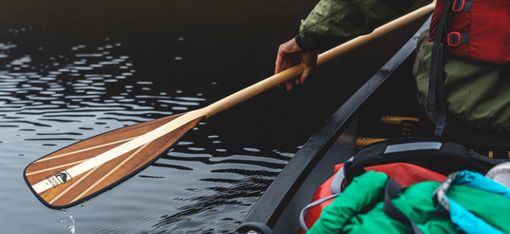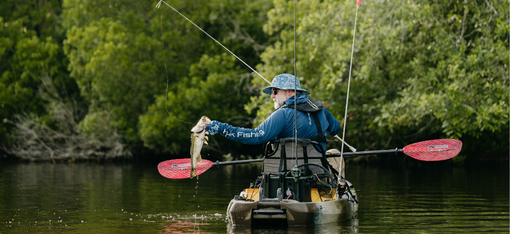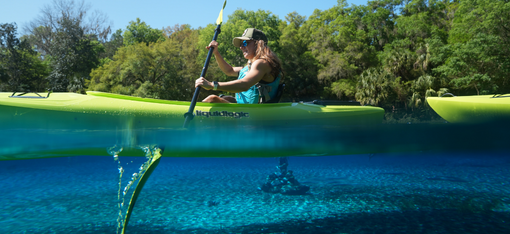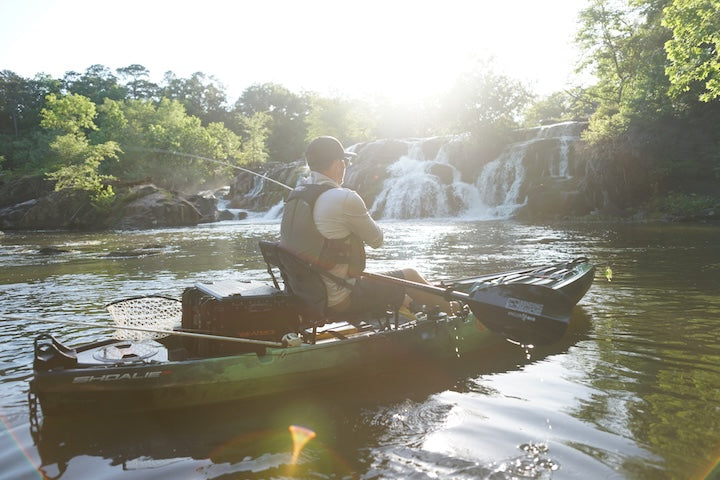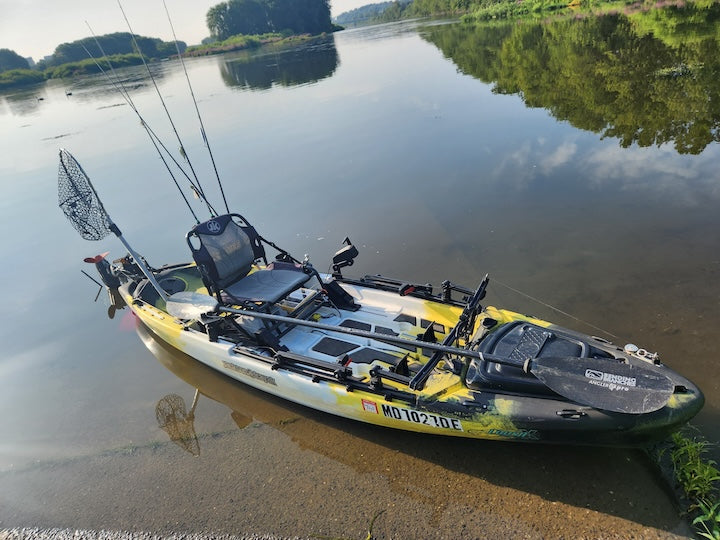Kevlar or Aluminum Canoe? How to Choose Yours
5-minute read + 4-minute video
Modern canoes are made of many different materials, with Kevlar and aluminum being two of the most popular. How do you know which to look for when shopping for a canoe?

Kevlar canoes are more and more popular (photo courtesy of @coffeefuelledwoodsman)
Before you lay the money out for a canoe, you’ll want to educate yourself on the available options. This includes the materials canoes are made from. Some materials work in some situations much better than others.
To start us off, Steve Schreader of Midwest Mountaineering goes over some of the pros and cons of these materials in the video below:
Advantages of an Aluminum Canoe
Do you plan to canoe rivers with some whitewater and hazards like boulders and fallen trees? River canoeing with the possibility of impact with solid obstacles in the water demands a boat made of a tough material like aluminum.
Aluminum is super durable trip after trip, able to withstand lots of bumps along the way. It’s not uncommon to see aluminum canoes from the 70s still on the water today.
In addition, aluminum canoes don’t need any special treatment when it comes to storage both during paddling season and during the off-season. You can store it outside without worrying about extra wear.
Because of its durability and longevity, an aluminum canoe is ideal for environments that’ll see lots of different people using it—many of whom won’t think twice about dragging it along the ground or banging it into docks. The family cabin, perhaps, or summer camps for kids.
Aluminum canoes are modestly priced new and can often be found used quite cheaply—a few hundred dollars. The only repair you should need to do is some light welding if it’s sprung a slow leak over time at the rivets.
Other heavy-duty canoe materials that are durable like aluminum are fiberglass, basalt and Innegra. Some canoe makers have developed their own composites like Wenonah’s Tuf-Weave, a polyester/fiberglass combo, to add durability.

Aluminum canoes last and last
Disadvantages of an Aluminum Canoe
There are a couple of disadvantages of aluminum, too. The first is weight—aluminum canoes can be 70-95 pounds. That limits the ability of many people to carry one around for storage, loading and unloading on top of vehicles, and portaging.
Another disadvantage is the nature of metal and weather. If the sun is hot, your aluminum canoe will be hot to the touch. If the air temperature is chilly, your canoe will be cold. If you’re paddling and hear thunder or see lightning nearby, you’ll want to get off the water ASAP when you’re in a metal canoe since metal is an electricity conductor.
Advantages of a Kevlar Canoe
The top advantage of a Kevlar canoe (often referred to as aramid, the non-branded name for the same material) is its ultra-light weight, usually in the upper 30-pounds to the mid-50s, depending on whether it’s combined with other materials.
If you plan to use your canoe mostly on multi-day wilderness trips on flatwater lakes and/or slow-moving rivers, a Kevlar will suit you very well. If you love multi-day wilderness trips from lake-to-lake, Kevlar canoes are a dream to portage compared to aluminum ones.
Opting for a Kevlar may make it possible for some to own a canoe who wouldn’t be able to handle a heavy one. This includes those who often go out alone and need to be able to load and unload on their vehicle solo. Folks who are smaller or not physically strong enough to carry an aluminum model will often do just fine with a canoe that’s 20-30 pounds lighter, like one made of Kevlar.
Also, you won’t notice the temperature extremes in a Kevlar like you would in an aluminum. It’ll stay at a nice neutral temperature whether it’s the air temp is hot or cold.

Kevlar canoes are super light
Disadvantages of a Kevlar Canoe
Kevlars aren’t as durable as some of the other materials out there, especially aluminum. You’ll need to stay off rivers with hazards and swift current, and be careful around rocky shorelines.
If you opt for a Kevlar, plan to step in and out of it from the water so you never drag it along the ground—especially with weight in it. You’ll need to be careful while on the water so you don’t scrape the hull on submerged rocks lurking just below the surface.
When it comes to storing a Kevlar canoe, you’ll want room inside a garage, shed or even your basement. The sun’s UV rays and inclement weather can damage it if stored outside.
Kevlar canoes are much more expensive than aluminum. You can expect to pay $3.5-4.5 thousand for a new one. There may be outfitters near you that sell off their Kevlar fleet every year or two. You’ll probably still pay over $1,000 for one of these used boats and they usually go quickly.
Other Options Besides Aluminum and Kevlar
Besides Kevlar, other lightweight materials used in canoe building are carbon fiber and various composites.
Several canoe makers have developed their own mix of different weaves to balance light weight with durability, like the Wenonah Tuf-Weave we already mentioned. Generally, the tougher the material the heavier the canoe will be. But it’s very possible to find one with enough durability for you that still works for you to carry.
These aren’t cheap—more in the price range of Kevlar. But if you love to canoe and consider this an investment in your overall health and enjoyment, it’ll be well worth the financial investment. Take good care of it and you can pass it down to the next generation.
Whichever material you choose, we know you’ll enjoy your time on the water!
Do you have paddle questions our friendly Customer Service Team can help you with today? Contact them: 715-755-3405 • [email protected]
More for you...




